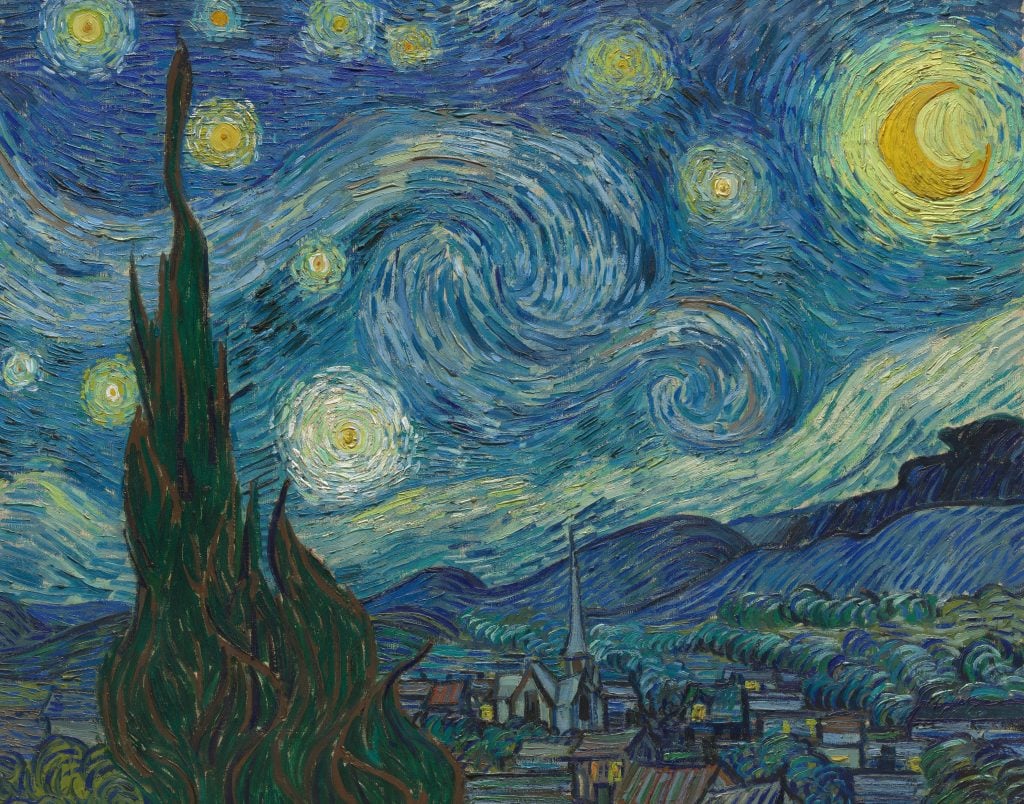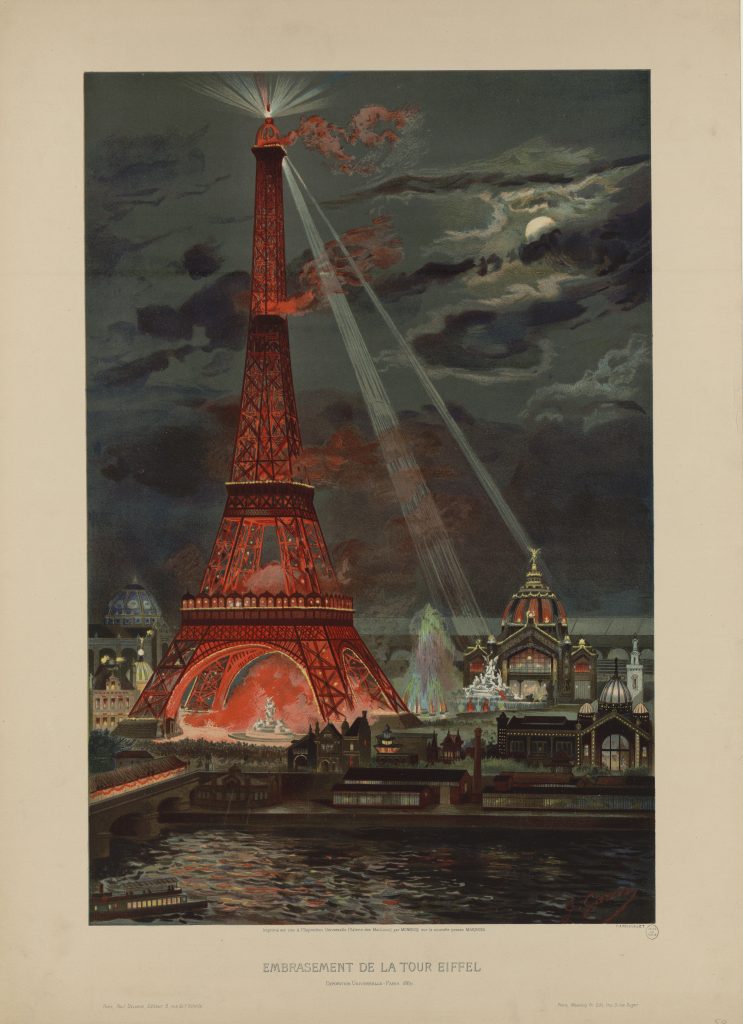Art History
Was the Eiffel Tower on Van Gogh’s Mind as He Painted ‘Starry Night’? An Art Historian Believes So
He posits that the work was inspired by the light show during the unveiling of the Paris monument in 1899.

He posits that the work was inspired by the light show during the unveiling of the Paris monument in 1899.

Richard Whiddington

The eye tends to dwell on the turbulence of the sky in Vincent van Gogh’s The Starry Night. Academics have fixated on it, investigating its astronomical accuracy (the moon was full not crescent), speculating whether or not the artist had seen scientific sketches of swirling galaxies (possibly), and the extent to which it projected his inner turmoil (unknowable).
James Hall, an art historian at Southampton University, however, has set his gaze firmly on the foreground. What, Hall asks, should we make of the towering cypress tree? The majestic evergreens are a recurrent presence in the prolific series of paintings van Gogh created during his stay at the Saint-Rémy-de-Provence asylum from 1899 to 1890, but beyond suggestions of their connection to death, in the classical Mediterranean tradition, few in-depth analyses have been made.
Hall’s theory, which is laid out in the April issue of Burlington Magazine, proposes the cypress tree as a natural counterpart to the Eiffel Tower whose unveiling at the 1899 Universal Exposition—accompanied by show of pyrotechnics, light, and explosions–preceded van Gogh’s painting by a matter of weeks.
Hall builds his argument from Van Gogh’s fascination with ancient Egyptian sculpture. The painter was aggrieved by suggestions that the Eiffel Tower, as Hall told Artnet News, “claimed to supersede the pyramids.”
Van Gogh reserved particular reverence for obelisks and he thought cypresses were equally beautiful and well-proportioned as obelisks—one of which stood in the nearby town of Arles. “For Van Gogh, the cypresses are natural counterparts to obelisks,” Hall said, “and that similarity gives them a special status in the eyes of Van Gogh.”

Georges-Felix Garen’s illustration of the Eiffel Tower light show was widely publicized in the 1890s. Photo: Fine Art Images/Heritage Images via Getty Images.
The dominant background of The Starry Night is somewhat more straightforward, according to Hall. The pyrotechnics of the stars, clouds, and the moon are Van Gogh’s natural equivalent of the Parisian light show, which he read about in Le Monde Illustré and a letter from his sister-in-law, and likely saw in popularized illustrations.
“There had been this amazing light show at the opening ceremony,” Hall said, “the close visual analogy between the illustrations of the opening ceremony fireworks and Starry Night gives me great confidence in the theory.”
Fittingly, the Metropolitan Museum of Art is set to run an exhibition of 40 paintings from the Dutch master focused on his cypress trees, from May 22 to August 27, including Starry Night, which will leave New York’s Museum of Modern Art for the first time in 13 years.